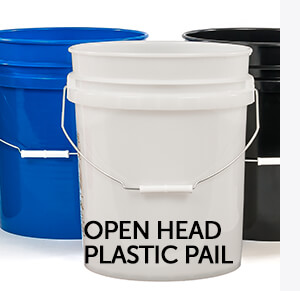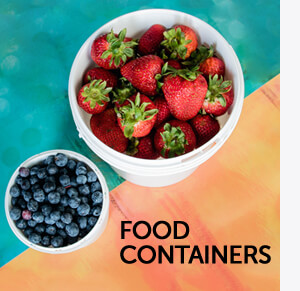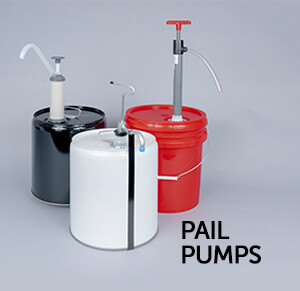The Anatomy of Bottles and Jars
Plastic and Glass Jars Explained
Containers are a lot like people – each one is different in their own way, but they’re all made up of the same bits and pieces. While their anatomy is similar, subtle differences in shape, size, and layout provide unique advantages that can better serve different industries, products, and applications. For instance, a mason jar and a glass vial both have a neck, mouth, and base, but you wouldn’t try to make pickles in a vial. In this article, we’ll explain each individual piece of a bottle and jar’s anatomy, while providing context on how different containers take advantage of their unique anatomy to provide you with the advantages that you need to properly store your product and serve your customers.


The Anatomy of Bottles and Jars


- Mouth: The opening of a container. Generally, plastic jars feature a wide mouth, with an accommodatingly large opening. Bottles, on the other hand, are typically equipped with a narrower opening.
- Sealing Surface: The flat, circular top surface of the finish which makes direct contact with the closure to form a seal. If the sealing surface is not flat, the container could leak.
- Thread: The twisted spiral on the jar or bottle’s neck to match the corresponding cap/closure. This allows for a cap to be twisted onto the bottle to seal your product inside. Matching with the appropriate closure is important to the seal ability of the container.
- Neck Finish: The screw-threaded part of the bottles that holds the cap or closure in place. It is usually expressed as two reference numbers such as 24-410, the first number 24 refers to the overall diameter in millimeters, and the second number 410 refers to the thread size. For a more detailed explanation on neck finishes, including how to measure your bottle’s neck finish, see our blog here.
- Neck Ring or Transfer Bead: A horizontal ridge at the base of the finish used during manufacturing to transfer the bottle from one part of the production process to the next. Commonly used for applying shrinkbands.
- Overflow capability: The max volume when a container full filled to the very top. Overflow provides enough headspace to account for liquid expansion due to ambient temperature rise as well as other volume-limiting factors while holding the liquid without overflowing.
- Standard Capacity: The intended capacity to which you will fill your bottle, the standard capacity is the volume contained when the contents reach the shoulder area.
- Shoulder: The part of the bottle that joins the wide main body and the neck. The slope of the shoulder is one factor in determining how quickly a product will be dispensed when the bottle is inverted. Some containers, like jugs or some f-style bottles, feature a sloped shoulder to allow for a smoother pour.
- Body: The main part of the bottle where the sidewalls are usually (but not always) vertical.
- Label Panel: A flat area on the body of the bottle that can accept the application of a label. Label panels are sometimes recessed to protect the labels from rubbing together during shipping and the edges from fraying.
- Wall thickness: The thickness of the plastic containers measured at the side. It varies on the basis of the manufacturing process and original materials.
- Base: The bottom part of the container where recycling codes, material marks, cavity and punt marks, or other decorations are located. The bottom also may have a small projection that serves as a registration device for labeling and decorating equipment. The device also can take the form of a small recess along the heel of the container. The base allows the bottle to stand upright in a stable manner.
- Heel: The lower part of the bottle where the body (sidewall) turns from vertical to horizontal. The heel joins the sidewall to the bottom-bearing surface and may have a small recessed spot that serves as a registration device for labeling and decorating equipment.
- Pushup: An inward dome in the center of the base on a glass container. The resulting ring around the outside of the bottom ensures stability, providing an even bearing surface upon which the bottle rests. The pushup is exaggerated on some bottles, such as wine bottles.
- Seat: The indentations under the base that allow the filling or decorating equipment lines to align the bottles for optimum results.
- Mold Seam: The slight vertical ridge that runs through the neck ring and the rest of the finish. The seam indicates where two halves of the finish molds were joined.
Each Bottle or Jar is Unique!
While the vast majority of small packaging containers will feature each and every one of the parts listed in this article, their size, shape, prominence, and placement can vary depending on the intention of the container. For instance, a bottle intended for pouring liquids will likely have a shoulder that is more sloped than a bottle intended for long-term storage, or for dispensing through pumps. This article can act as a guide, to help you identify each part of your bottle or jar, and get to know your containers a bit better.
Find the bottle or jar that you need at BASCO!
At BASCO, our continued goal is to provide a completely comprehensive selection of plastic drums, pails, IBCs, and small packaging to the United States. If you’ve browsed our selection of containers, and you were unable to find the perfect packaging for your application, please feel free to reach out! We have over 75 years of experience in the industry, and we’d be more than happy to help you find exactly what you’re looking for. We stock our products nationwide, so whether you’re in New York or California, we can provide fast and efficient shipping, directly to your front door.
We know our containers, and we want to help you know them too. If this article didn’t answer all of your questions, give us a call and ask!
Contact BASCO today, and we can succeed together.







